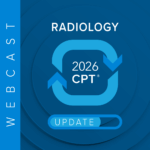Comments on these proposed rules are due by June 7.
Hospice payment rates, as well as those for skilled nursing facilities (SNFs), constitute the subjects of two recently proposed payment rules for the 2022 fiscal year (FY)that have been issued by the Centers for Medicare & Medicaid Services (CMS).
In the Hospice Payment Rate Update proposed rule, hospices would see a 2.3 percent ($530 million) increase in their payments for FY 2022. Hospices that fail to meet quality reporting requirements would receive a 2-percent reduction to the annual market basket update for FY 2022.
This rule proposes to rebase and revise the labor shares for continuous home care, routine home care, inpatient respite care, and general inpatient care, based on the compensation cost weights for each level of care from the 2018 medical cost ratio (MCR) data for freestanding hospices. The proposed labor share for continuous home care is 74.6 percent, routine home care is 64.7 percent, inpatient respite care is 60.1 percent, and general inpatient care is 62.8 percent.
In response to the COVID-19 public health emergency (PHE), CMS issued a number of regulatory waivers in order to support providers and suppliers involved in patient care. This included issuing a waiver for hospice aide competency testing to allow for the use of “pseudo-patients.” CMS believes that this PHE waiver should be made permanent, and is proposing the use of the pseudo-patient for hospice aide competency training. As a complement, CMS is also proposing that hospices conduct a competency evaluation related to the deficient and related skill(s) noted during a hospice aide supervisory visit.
CMS is proposing a new measure in the Hospice Quality Reporting Program (HQRP) called the Hospice Care Index. This single measure would include 10 indicators of quality that are calculated from claims data. Collectively, the indicators represent different aspects of hospice care, and their application would aim to convey a comprehensive characterization of the quality of care furnished by a hospice. If finalized, this measure would be publicly reported no earlier than May 2022. CMS is also proposing to add Consumer Assessment of Healthcare Providers and Systems (CAHPS®) Hospice Survey Star Ratings on Care Compare.
CMS is seeking feedback on ways to attain health equity for all patients through policy solutions that apply to the HQRP and its other quality reporting programs.
On April 8, CMS issued a proposed rule that would update Medicare payment policies and rates for SNFs under the SNF Prospective Payment System (PPS), the SNF Quality Reporting Program (QRP), and the SNF Value-Based Program (VBP) for FY 2022. CMS estimates that the aggregate impact of the payment policies in this proposed rule would result in an increase of approximately $444 million in Medicare Part A payments to SNFs in FY 2022.
On Oct. 1, 2019, CMS implemented a new case-mix classification model called the Patient-Driven Payment Model (PDPM). CMS is soliciting broad public comments on a potential methodology for recalibrating the PDPM parity adjustment that would account for the potential effects of the COVID-19 PHE without compromising the accuracy of the adjustment. CMS also seeks comment on whether any necessary adjustment should be delayed or phased in over time to provide payment stability.
In response to stakeholder feedback, and to improve consistency between the ICD-10 code mappings and current ICD-10 coding guidelines, CMS is also proposing several changes to the PDPM ICD-10 code mappings affecting the areas of sickle-cell disease, esophageal conditions, multisystem inflammatory syndrome, neonatal cerebral infarction, vaping-related disorder, and anoxic brain damage.
CMS adopted standardized patient assessment data elements (SPADEs), which include several social determinants of health (SDoH) that were finalized in the FY 2020 SNF PPS final rule. Now, CMS is also seeking comment on the possibility of expanding measure development, and the collection of other SPADEs that address gaps in health equity, in the SNF QRP, in accordance with Executive Order 13985 on Advancing Racial Equity and Support for Underserved Communities Through the Federal Government.













